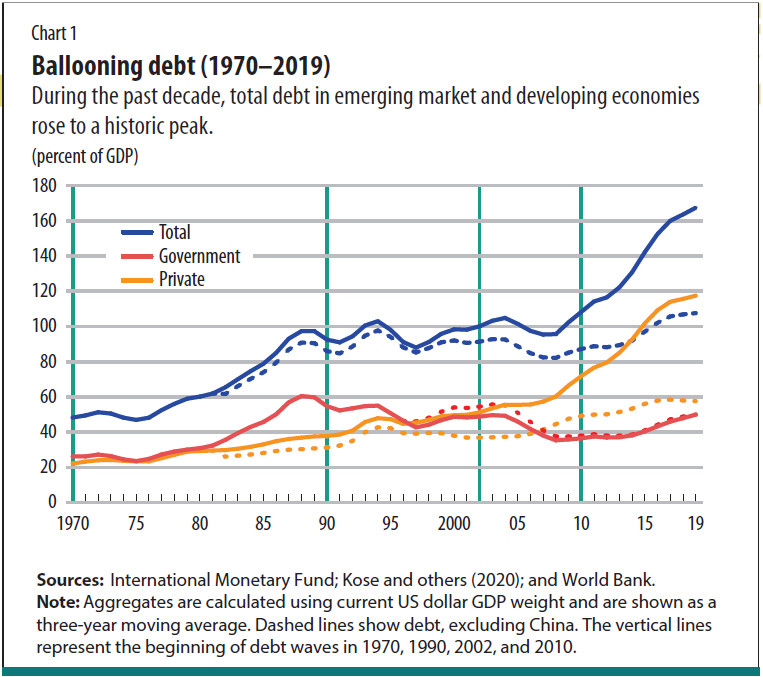Imf Debt Sustainability Training
debt sustainability trainingCoverage of Debt Management several respondents raised the concern that removal of the indicator and dimensions on expenditure arrears debt sustainability analysis and control over debt and guarantee issuance has significantly reduced the prominence of debt management in the Framework. WASHINGTON Feb 3 Reuters - The International Monetary Fund said on Wednesday it is launching a new method of assessing debt sustainability for countries with access to financial markets to more.
The International Monetary Fund said on Wednesday it is launching a new method of assessing debt sustainability for countries with access to financial markets to more accurately predict risks of.

Imf debt sustainability training. The IMF said it uses the framework for both surveillance and lending to identify countries vulnerability to sovereign stress. The IMFs online learning program receives financial support from the Government of Japan. More about this course.
The IMFs online learning program receives financial support from the Government of Japan. Debt Sustainability and Debt Management DSMx This online course presented jointly by the Institute for Capacity Development and the Fiscal Affairs Research Monetary and Capital Markets and Strategy Policy and Review Departments in collaboration with the World Bank provides a comprehensive overview of the IMF and World Bank recent research and hands-on analytical tools for debt sustainability analysis DSA and debt management. It will help low-income countries achieve their development goals while minimizing the risk of debt distress.
This online course jointly developed by the IMF Institute for Capacity Development the IMF Strategy Policy and Review Department and the WB and funded by the Debt Management Facility DMF provides an overview of the World Bank - IMF Debt Sustainability Framework for Low Income Countries LIC DSF. The International Monetary Fund will update its debt sustainability framework for market access countries it said on February 4. It also covered the global architecture for debt resolution and the IMFs Debt Limits Policy.
The review revealed scope to improve the MAC DSA frameworks ability to identify risk of sovereign stress and better align it with the IMFs lending framework to be achieved by replacing the current approach with a new methodology. The assessments are calibrated in reference to previous episodes of debt distress for groups of countries with similar economic characteristics. Principles of Debt Sustainability Instructor.
The LIC DSF was developed by the IMF and the World Bank WB to help low-income countries achieve their development goals while minimizing the risk of debt distress. The frameworks the IMF uses to assess debt sustainability in low-income countries and countries with access to capital markets take into consideration individual countries debt-carrying capacity. The views expressed in this material.
The Executive Board of the International Monetary Fund IMF reviewed on January 14 2021 the IMF Debt sustainability Framework for Market Access Countries MAC DSA. Debt Sustainability Framework for Low Income Countries LIC-DSFx This new online course developed by the IMF and the World Bank WB provides an overview of the WBIMF Debt Sustainability Framework for Low-Income Countries LIC DSF. Irina Yakadina IMF This training material is the property of the International Monetary Fund and is intended for use in IMF Institute for Capacity Development courses.
Course Description This joint IMF-World Bank workshop gives an in-depth introduction to the current debt sustainability framework for low-income countries DSF-LIC which was implemented in July 2018. Debt Sustainability Analysis DSA is a probabilistic exercise that would plot potential pathways of debt metrics based on scenarios which are highly subjective to ones assumptions. However these creditors would want to have the comfort of an IMF stamp on our debt sustainability.
It will help low-income countries achieve their development goals while minimizing the risk of debt distress. IMF Executive Board Reviews IMF Debt Sustainability Framework for Market Access Countries. Debt Sustainability Framework DSF The Debt Sustainability Framework DSF is the main tool for multilateral institutions and other creditors to assess risks to debt sustainability in Lower-Income Countries LICs.
IMF to update debt sustainability framework. The IMF training program includes topics spanning macroeconomic analysis monetary and fiscal policy macro-financial linkages balance of payments issues financial markets and institutions as well as statistical and legal frameworks in these areas. The draft Framework was based on the introduction.
Any reuse requires the permission of the IMF. The framework classifies countries based on their assessed debt-carrying capacity estimates threshold levels for selected debt burden indicators evaluates baseline projections and stress test scenarios relative to these thresholds and then combines indicative rules and staff. Debt Sustainability Analysis is offered by the IMF with financial support from the Debt Management Facility DMF.
The workshop provided an overview of the tools available to assist with debt sustainability analysis with a special focus on how to use them to assess cases where debt is not sustainable and resolution is needed. Pages Other Brand Website Business Economy Website IMF Capacity Development Videos IMF Online Learning - Debt Sustainability Framework for Low-Income Countries English US Español Português Brasil Français France Deutsch. It helps determine if sovereign stress can be resolved via a combination of financing and economic reforms or if a country needs debt restructuring.
Debt Sustainability Framework for Low Income Countries LIC-DSFx This new online course developed by the IMF and the World Bank WB provides an overview of the WBIMF Debt Sustainability Framework for Low-Income Countries LIC DSF.

